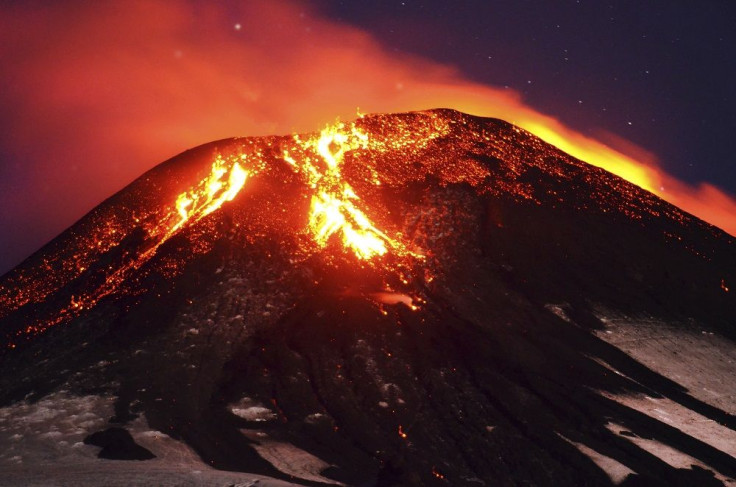Villarrica Volcano In Chile Erupts, Spews Lava 300 Feet Into Sky While Thousands Flee

Chile’s Villarrica Volcano erupted at 3 am on Tuesday, March 3, spewing ash and lava 300 feet into the sky.
The eruption, described by Wired.com as spectacular similar to a lava fountain, melted snow on the volcano’s slopes and created small volcanic mudflows and debris flows, according to Sernageomin, Chile’s national geological agency.
Sernageomin said it was a Stromboli eruption or a relatively low impact event in which low volumes of material reach an altitude of less than 5 kilometres.
More than 3,000 people from the small towns around Villarrica were evacuated for safety, including tourists staying at the popular vacation town of Pucon, located 800 kilometres south of capital city Santiago. The National Emergency Office declared a red alert and cancelled classes in schools, reports the Sydney Morning Herald.
The eruption was already expected since the volcano has been showing signs of activities the past few days. By dawn, the eruption had stopped, but the hot, glowing lava and the thick dark grey plume covered Villarrica.
Even if the eruption is over, volcanologists warn the seismic activities would continue as the 2,800-metre-tall volcano remains restive. The volcano, one of the most active in South America, attracts hikers during summer to take a peek at its crater.
Chile has about 500 potentially active volcanoes because it is located in the Pacific Rim of Fire and has the second-largest chain of volcanoes in the world next to Indonesia.
Chilean President Michelle Bachelet held a meeting with the national emergency committee and appealed for calm. She said the government is monitoring and evaluating closely the situation. Bachelet said she would immediately visit the affected region.
Meanwhile, the ash plume from the eruption was below flight paths of aircraft, so flights were not affected by the eruption, according to Civil Aeronautics Division Air Transit Head Juan Carlos Rojas.
Villarrica’s last eruptions were in 2000 and 1984, while Puyehue Volcano erupted in 2011 and the ash plume it scattered in the area disrupted flights in Argentina for several months.
To contact the writer, email: v.hernandez@ibtimes.com.au





















